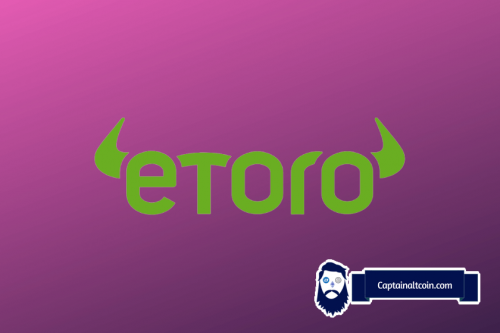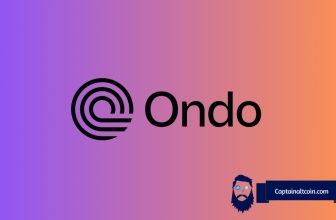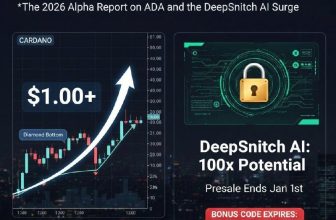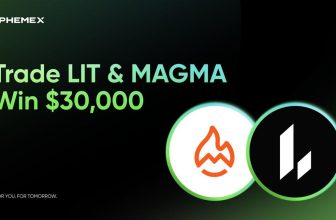Level Finance Review: Fees, Supported Chains, LVL and LGO Tokens, Pros, Cons
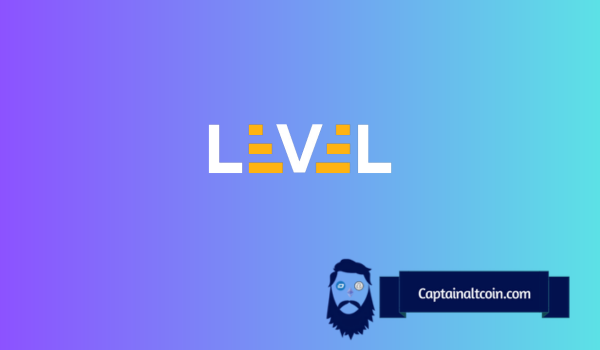
Level Finance is a decentralized perpetual decentralized exchange (DEX) that stands out for its commitment to transparency, self-custodial capabilities, improved risk management, and ownership.
As a decentralized platform, Level Finance enables users to trade financial products without depending on centralized intermediaries, ensuring a trustless and secure environment.
One of the key features of Level Finance is its spot and leveraged trading options. Users have the flexibility to engage in both traditional spot trading and leveraged trading, empowering them to explore various trading strategies and maximize their potential returns.
| Topic | Summary |
|---|---|
| What is Level Finance? | – Decentralized perpetual DEX – Focuses on transparency, security, risk management – Offers spot and leveraged trading – Deployed on BNB Chain and Arbitrum |
| Overview | – Offers perpetual trading contracts on-chain – Custom risk management system – Liquidity provider solution ensures deep markets – Recent Arbitrum deployment enables scalability |
| Fees and Leverage | – Competitive fees from trading volumes and liquidity provision – Leverage allows traders to amplify positions – Revenue distributed to benefit users via yield |
| Supported Chains | – BNB Chain for efficiency and variety of assets – Arbitrum for scalability and low fees – Goal to enable cross-chain swaps as omnichain hub |
| Revenue and Stakeholders | – Revenue from fees like borrow, swap, position fees – Distributed to LPs, LVL stakers, treasury, LGO stakers – 95% of fees go back to users |
| LVL & LGO Tokens | – LVL for utility and revenue share for staking – LVL burns to reduce supply – LGO for governance rights – Fair distribution to diverse participants |
| Future | – Expanding to Arbitrum for faster trades and lower fees – Aiming to become omnichain trading hub – Prioritizes sustainable fee model for longevity |
Level Finance is built on two blockchains, the Binance Smart Chain (BNB Chain) and the Arbitrum network, giving users access to a wide range of tradable assets. This allows them to diversify their portfolio and take advantage of different opportunities across multiple networks.
By putting the power of trading and risk management in the hands of users, Level Finance promotes ownership and control. The self-custodial approach ensures that users have full control over their funds and can trade directly from their digital wallets, eliminating the need for third-party custody solutions.
With its focus on transparency, improved risk management, and ownership, Level Finance aims to revolutionize decentralized finance (DeFi) and provide users with a seamless, secure, and rewarding trading experience.
What you'll learn 👉
Level Finance Overview
Level Finance is a decentralized and non-custodial platform that offers a range of innovative features and functionalities for traders and investors. One of its key features is decentralized perpetual exchanges, which allow users to engage in perpetual trading contracts directly on-chain. This eliminates the need for intermediaries and provides users with complete control over their funds.
Another important aspect of Level Finance is its custom risk management system. Users have the ability to set their own risk parameters and manage their positions accordingly. This allows for more personalized and tailored trading strategies, ensuring that users can trade at their desired risk levels.
Furthermore, Level Finance has implemented a unique liquidity provider solution. By leveraging the power of liquidity providers, Level Finance ensures that users have access to deep and liquid markets across different trading pairs. This helps to minimize price impact and slippage, providing a seamless trading experience.
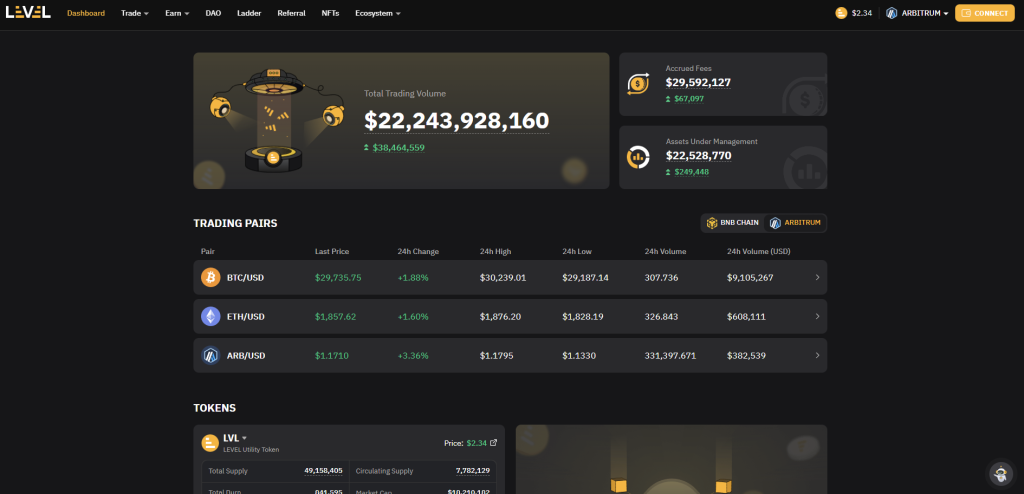
In an important milestone, Level Finance recently deployed on Arbitrum, an Ethereum Layer 2 scaling solution. This omni-chain deployment allows users to access Level Finance’s features and functionalities across different chains, providing enhanced scalability and interoperability. This means that users can enjoy a seamless trading experience with fast and low-cost transactions regardless of the network they are using.
Overall, Level Finance offers a decentralized and non-custodial trading platform with advanced risk management features and innovative liquidity provider solutions. Its recent deployment on Arbitrum takes its omni-chain journey to new heights, making it a preferred choice for traders and investors looking for a seamless and efficient trading experience.
Fees and leverage on Level Finance
In addition to its advanced trading features, Level Finance offers competitive fees and leverage options to enhance the trading experience for users. The platform generates its fees through various sources, including trading volumes and liquidity provision services. This ensures a sustainable revenue stream for the platform while delivering a high-quality trading experience.
By offering leverage, Level Finance allows traders to amplify their positions and potentially increase their profits. This feature enables users to maximize their trading potential and take advantage of market opportunities. With customizable leverage options, users can adjust their risk levels according to their trading strategies and preferences.
The revenue generated on Level Finance is distributed in a way that benefits its users. A significant portion of the revenue is allocated towards yield, providing users with additional income through staking and other yield-generating mechanisms. This sustainable revenue distribution model contributes to the platform’s long-term success and ensures that users continue to reap the benefits of their participation on Level Finance.
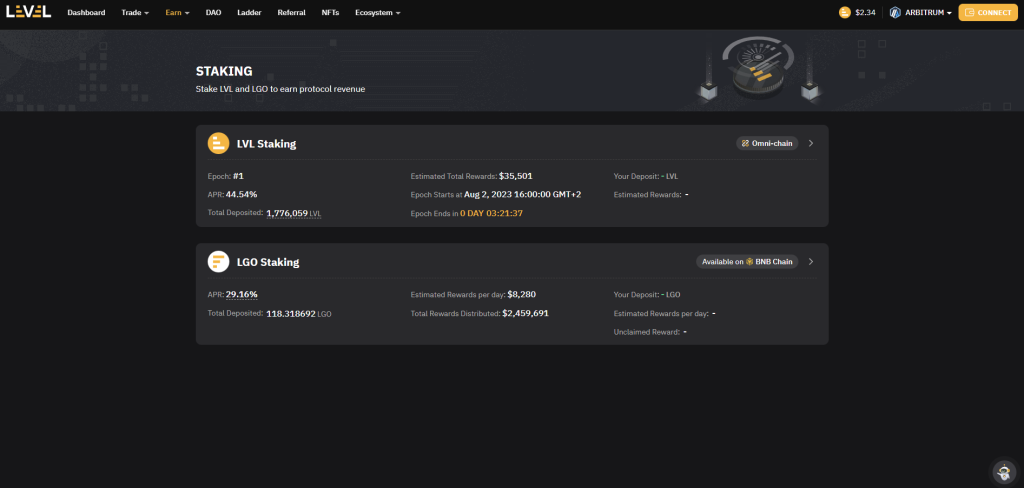
In a highly competitive crypto landscape, Level Finance stands out with its impressive fee structure and leverage offerings. Traders can enjoy the advantages of near-zero market impact trading while accessing liquidity provision services. This combination of low fees, customizable leverage, and sustainable revenue distribution makes Level Finance a trusted platform for both experienced and novice traders alike.
Level Finance supported chains
Level Finance supports multiple chains, including the BNB Chain and Arbitrum, to facilitate decentralized and non-custodial perpetual markets. These chains play a crucial role in providing users with secure and decentralized trading experiences.
The inclusion of BNB Chain, the native chain of Binance Smart Chain, allows Level Finance to tap into the vibrant ecosystem of BSC and leverage its high throughput and low transaction fees. This integration enables users to access a wide range of financial products and trading pairs on Level Finance, while benefiting from the speed and cost efficiency of the BNB Chain.
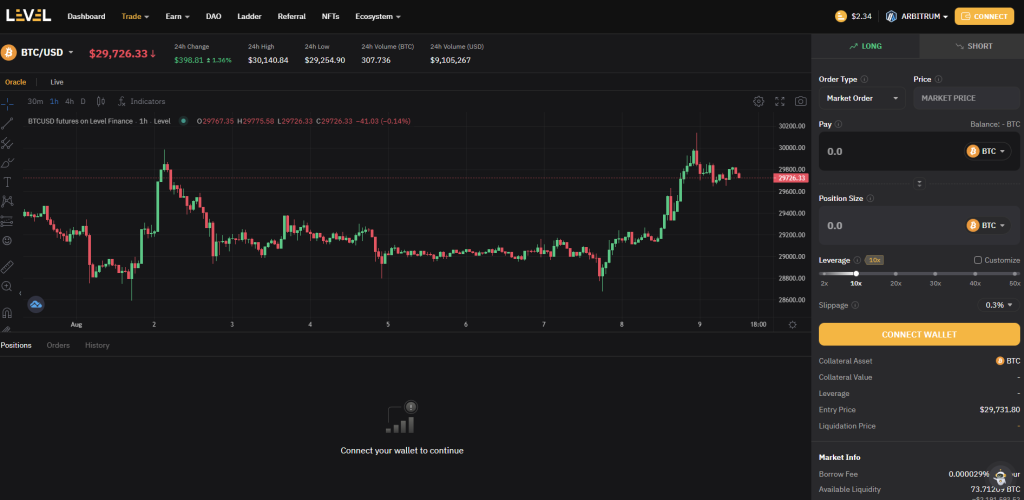
Arbitrum, on the other hand, brings scalability and layer 2 solutions to Level Finance. By integrating with Arbitrum, Level Finance is able to provide near-instant transaction confirmation times and significantly reduce network fees, ensuring a seamless and cost-effective trading experience for its users.
Level Finance’s ultimate goal is to become an omnichain trading hub by integrating cross-chain swaps. This will enable users to seamlessly trade between different chains and access a wider range of assets and markets. By creating a unified and efficient trading environment, Level Finance aims to provide its users with unparalleled convenience and opportunities in the decentralized finance (DeFi) space.
In summary, with its support for BNB Chain and Arbitrum, Level Finance is able to offer decentralized and non-custodial perpetual markets, while working towards becoming an omnichain trading hub to enhance the trading experiences of its users.
Level Finance: Real Yield and Fee Generation
Level Finance is not just a decentralized exchange (DEX) but a complete ecosystem that offers users the opportunity to earn real yield and generate fees. Unlike traditional centralized exchanges, Level Finance leverages the advantages of blockchain technology to provide a transparent and efficient trading platform.
By incorporating liquidity solutions and autonomous organization principles, Level Finance enables users to participate in liquidity provision and governance through the token economy. Whether you are an experienced investor or a crypto enthusiast, Level Finance offers advanced trading strategies and a wide range of financial products to meet your diverse needs.
With its focus on user experience and interface customization, Level Finance aims to create a seamless and user-friendly environment where both early-stage projects and institutional investors can thrive. By providing near-zero market impact and access to instant liquidity, Level Finance is revolutionizing decentralized finance (DeFi) and empowering individuals to take control of their financial future.
How Does Level Generate Revenue?
Level Finance generates revenue through various sources, primarily through fees associated with its services. The platform offers a range of financial products and services that cater to both retail and institutional investors.
One of the primary sources of income for Level Finance is position fees. These fees are charged to users who hold open positions on the platform. Additionally, the platform generates revenue through liquidations. If a user’s position is unable to be maintained due to insufficient collateral, the platform liquidates the position and charges a fee for this service.
Borrowing fees also contribute to Level Finance’s revenue. Users who borrow funds from the platform are charged fees based on the borrowed amount and the duration of the loan. Swap fees are another important source of income for the platform. These fees are charged to users who execute token swaps on the exchange.
Read also:
- Apollox Finance Review: History, Features, Chain Settlement, Fees, Interface, Pros, Cons
- Best DEX on zkSync: Key Features, Tokenomics, User Experience
- GMX vs Vela Exchange: A Comprehensive Comparison of Perpetual DEXes
Furthermore, Level Finance generates revenue through minting and burning fees for its Liquidity Provider Pools (LLPs). Minting fees are charged when liquidity providers add funds to the pool, while burning fees are charged when liquidity providers withdraw their funds.
By diversifying its revenue streams and offering a comprehensive suite of financial products and services, Level Finance can sustainably generate revenue while providing liquidity solutions and advanced trading strategies to users.
Level Finance: Stakeholders and Revenue Sharing
Level Finance involves various stakeholders who play a crucial role in the platform’s operations and revenue sharing. These stakeholders include Liquidity Provider Pools (LLPs), LVL stakers, the DAO Treasury, and LGO stakers.
Revenue generated by Level Finance is distributed among these stakeholders in a predetermined manner. Out of the total revenue, 45% is allocated to the LLPs, which incentivizes liquidity providers to contribute funds to the platform’s liquidity pools. This ensures the availability of adequate liquidity for trading activities.
LVL stakers receive 10% of the revenue as a reward for staking and holding the platform’s governance token, LVL. This encourages long-term engagement and participation within the Level Finance ecosystem.
The DAO Treasury, which represents the decentralized autonomous organization overseeing Level Finance, receives 30% of the revenue. This fund can be utilized to support the platform’s development, future initiatives, and community-driven projects.
A portion of the revenue, 10%, is allocated to LGO stakers, who hold the governance token associated with Level Finance. This rewards their contribution to the platform and incentivizes their continued engagement.
Importantly, Level Finance is classified as a public service or good due to its commitment to user benefits. The platform ensures that 95% of generated fees go back to users, rewarding them for their participation and use of the platform’s services.
In summary, Level Finance involves multiple stakeholders, including LLPs, LVL stakers, the DAO Treasury, and LGO stakers. The revenue generated is distributed among these stakeholders, with 45% going to LLPs, 10% to LVL stakers, 30% to the DAO Treasury, and 10% to LGO stakers. Furthermore, 95% of the platform’s fees are allocated to users, demonstrating Level Finance’s commitment to serving the public good.
LVL & LGO Tokenomics
In the Level Finance ecosystem, the LVL token plays a crucial role in governance and utility functions. As a utility token, LVL enables users to access various features and services within the platform, such as liquidity provision and participation in liquidity pools. Additionally, LVL holders benefit from a portion of the revenue generated by Level Finance, receiving 10% as a reward for staking and holding the token.
Furthermore, the LVL token has a burning mechanism in place. This mechanism involves regular token burns, where a portion of the tokens is permanently removed from circulation. The purpose of this burning mechanism is to reduce the overall supply of LVL and potentially increase its value over time.
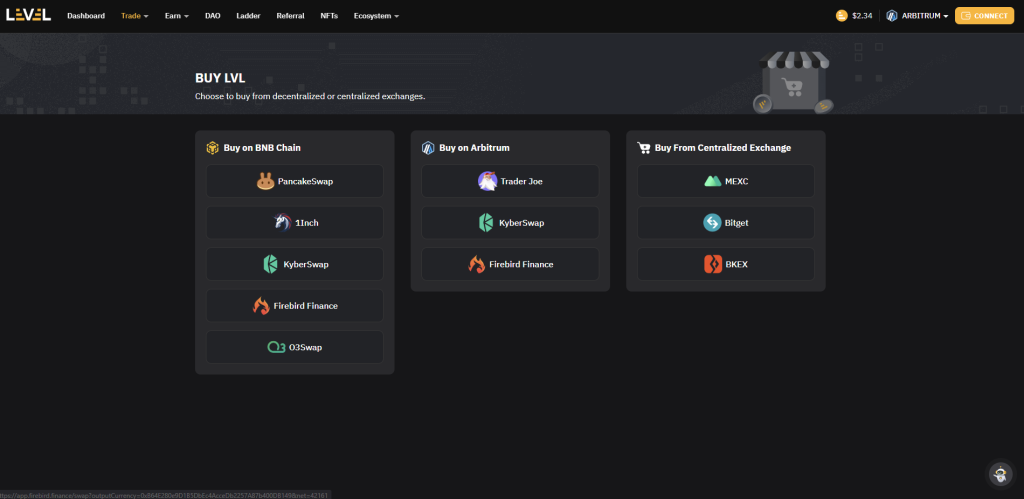
On the other hand, the LGO token has a governance function within the Level Finance ecosystem. LGO token holders have the power to participate in decision-making processes and vote on important platform matters. This allows for decentralized governance and ensures that the community has a say in the direction and development of Level Finance.
In terms of token distribution, both the LVL and LGO tokens were distributed through a fair and transparent process. The distribution aimed to reach a wide range of participants, including individual users, institutional investors, and early-stage projects. This diverse distribution helps to foster a vibrant and inclusive ecosystem within Level Finance.
Level Finance’s Future
Level Finance is poised for an exciting future as it expands its reach to Arbitrum, a layer 2 scaling solution for Ethereum. This expansion will bring many benefits to the platform, including faster transactions, lower fees, and improved scalability. By tapping into Arbitrum’s capabilities, Level Finance aims to attract more liquidity and increase trading volume, making it a go-to destination for cryptocurrency traders.
One of the key goals for Level Finance is to become an omnichain trading hub. This means integrating cross-chain swaps to enable seamless trading across different blockchain networks. By providing this interoperability, Level Finance aims to cater to traders who want to access a wide range of assets across multiple chains, thereby enhancing the platform’s utility and expanding its user base.
Another standout aspect of Level Finance is its sustainable fee structure. Rather than relying heavily on incentives, the platform prioritizes fees as the primary revenue source. This ensures a fair and consistent fee structure that benefits all participants. The breakdown of the yield paid out emphasizes this approach, further reinforcing the sustainability of the platform.
With its expansion to Arbitrum, focus on attracting liquidity, increasing trading volume, and integration of cross-chain swaps, Level Finance is set to solidify its position as a leading decentralized exchange. By prioritizing a sustainable fee structure, the platform ensures its long-term viability while offering a seamless trading experience for users.
We recommend eToro
Wide range of assets: cryptocurrencies alongside other investment products such as stocks and ETFs.
Copy trading: allows users to copy the trades of leading traders, for free.
User-friendly: eToro’s web-based platform and mobile app are user-friendly and easy to navigate.



